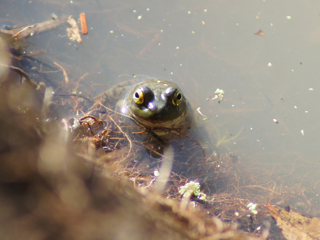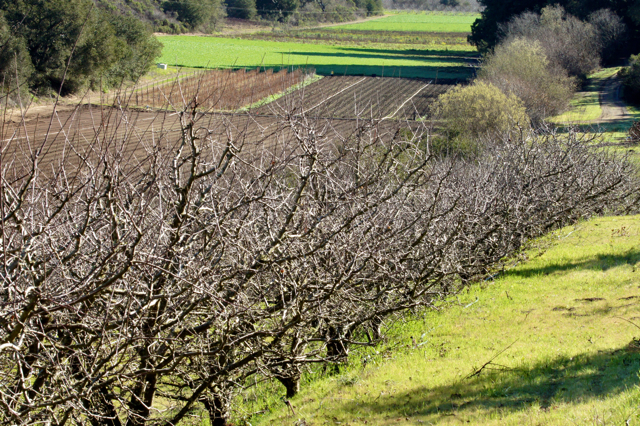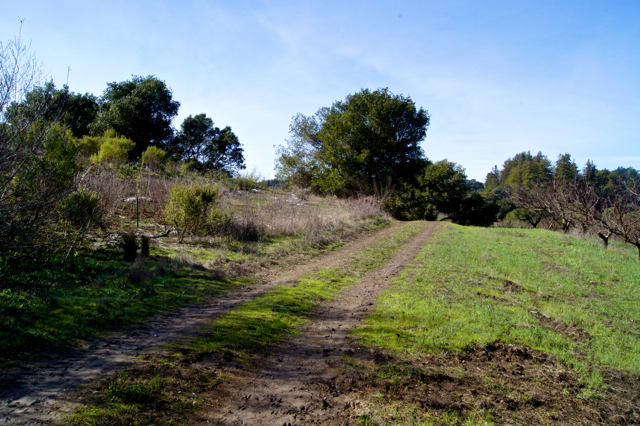Ingredients:
2 tablespoons olive oil or sunflower oil
1 teaspoon black mustard seeds
2 teaspoons whole cumin seeds
1 tablespoon fresh grated ginger
1 tablespoon curry powder
1 plum tomato, chopped
2 cup romanesco florets
1 cup diced potato with skin on
½ small red chili
1 cup water or stock
3 tablespoons plain yogurt or coconut milk
2 tablespoons finely chopped cilantro
sea salt
pepper
Directions:
1. In a wok or large saucepan, heat the oil over medium heat. Add the mustard seeds. When they begin to pop, after about a minute, add the cumin and ginger and stir-fry for 2 minutes. Add the curry powder and cook for 1 minute.
2. Add the tomato, stirring well to combine. Add the cauliflower, potato, chili, and water or stock. Cover, reduce the heat, and simmer until all the vegetables are tender, 15-17 minutes.
3. Stir in the yogurt and cilantro. Season to taste with salt and freshly ground black pepper.
Ingredients:
1 bunch beets, tops removed to 1” stem
1½ tablespoons olive oil
1 tablespoon red wine vinegar, lemon juice, lime juice with the zest, fresh orange juice, or rice vinegar.
1½ -inch piece ginger, peeled and minced
1 large clove garlic, minced
1/8 teaspoon freshly ground black pepper
1 splash tamari soy sauce
1/8 teaspoon sea salt
1 tablespoon fresh mint, minced
Directions:
1. Wrap the beets in parchment paper then aluminum foil and roast in 375 degree oven on a baking sheet until tender, about 40 minutes, depending on their size. Remove from oven when tender when pricked with a fork. Cool. When cooled, peel, and slice or chop. Set aside in a bowl.
2. To make the dressing combine the rest of the ingredients in a medium bowl and whisk until completely emulsified.
3. Pour dressing over the beets and toss gently to coat. Sprinkle with the mint and serve at room temperature.
Makes 4 servings
Ingredients:
1 pound turnips, peeled and sliced
1 cup milk, or coconut or almond milk
1 egg
1 teaspoon dill weed
1 shallot minced
¼ cup freshly grated Parmesan cheese
Directions:
1. Preheat oven to 350 degrees. Lightly oil a 9-inch pie pan.
2. Arrange turnips in the plate.
3. In a medium bowl, whisk together the milk or alternative, egg, dill, and shallot, and pour over the turnips. Sprinkle with Parmesan cheese and bake, uncovered, until golden on top, about 50 minutes.
Makes 4 servings
Ingredients:
1 tablespoon sweet butter
4 apples, cored and thinly sliced
2 tablespoons lime juice, and pulp
¼ cup white grape juice or orange juice
1 teaspoon lime peel
1 tablespoon maple syrup
½ teaspoon vanilla extract
1 allspice berry, ground
pinch of freshly grated nutmeg
2 tablespoons chopped walnuts
Directions:
1. In a large skillet, melt butter.
2. Toss the apples with the lime juice and pulp. Add apples to the skillet and saute for 2 minutes. Then cover and simmer until slices are just tender, about 4 minutes. Use a slotted spoon to transfer apples to individual serving dishes.
3. Add grape or orange juice, lime peel, maple syrup, vanilla, allspice, and nutmeg to the skillet and bring to a boil, stirring constantly, until the mixture comes to a syrup, about 2-3 minutes.
4. Toast walnuts by heating them in a skillet, shaking constantly, until they begin to brown and are fragrant.
5. Pour over apples, sprinkle with walnuts and serve warm.
Makes 4 servings
Ingredients:
For the salad:
½ cup roasted pumpkin seeds
1 teaspoon Bragg’s amino acids (or tamari soy sauce)
1 large red bell pepper, stemmed, seeded, and cut into ½-0inch slices
1 large leek, cut into 1-inch pieces
3 tablespoons ghee or unsalted butter
1 bunch lettuce, torn into bite-size pieces
1 cup julienned radishes
1 cup grated carrots
1 cup shredded cabbage
For the dressing:
2 tablespoons olive oil
1 tablespoon lemon juice
1 teaspoon honey
1 teaspoon Dijon mustard
1 teaspoon dried thyme
1 teaspoon dried basil
½ teaspoon ground turmeric
¼ teaspoon paprika
sea salt
freshly ground black pepper
seedless raisins for garnish
Directions:
1. Preheat oven to 350 degrees.
2. Spread pumpkin seeds in a single layer on a baking sheet. Bake until golden brown, about 7 minutes. Remove from the oven and sprinkle with the Bragg’s or soy sauce, and stir well.
3. Raise the oven temperature to 400 degrees. Spread bell pepper and leek on a baking sheet, drizzle with ghee or butter, and bake until soft, about 30 minutes.
4. In a large salad bowl, toss together the pumpkin seeds, bell pepper, leek, lettuce, radishes, cabbage and carrots.
5. In a mixing bowl, whisk together all the dressing ingredients until emulsified. Pour the dressing over the salad and toss well. Season with salt and pepper to taste. Sprinkle with raisins, and serve.
Serves 4
 Beyond Organic – A Balancing Act
Beyond Organic – A Balancing Act
The rain was wonderful – slow, gentle, and steady. With 2.5” inches of heavenly moisture sprinkling the farm over the last 4 days the soil surface feels saturated. Let’s hope we get some more since the deeper layers of the soil profile, where trees anchor their roots, are still dry. Our thirsty soils absorbed the rain like a sponge, causing little to no runoff. The little water that did end up accumulating in some of the dried up farm ponds was just enough for the frogs to start their symphony of calls. I have missed their music this winter and I am glad they are back – ‘ribbit, ribbit’…

Many of you know how important it is for me to farm in balance with the native landscape and wilder environments surrounding us. One side of me loves the sight of weed free “linearity” in the fields. It gives a pleasant sense of controlled organization, and straight rows are testimony to a job well done. The other side of me, of course, recognizes that in nature the general pattern is overflowing with curves, corners, knots, and unpredictable twists and turns.

A Fuji apple orchard is in the foreground while beyond, the farm’s lower fields are bordered by willow and scrub oak that create wildlife corridors.
Live Earth Farm is a place where we balance both the cultivated and native landscapes – both patterns live side-by-side. Our ponds, woodlands, grasslands and hedgerows are the home of many birds, insects, frogs, and larger animals such as coyotes, deer, rabbits, snakes, as well as many native plants, perennial shrubs, grasses and flowering plants. Although creating wilderness habitat doesn’t necessarily fit into a financial equation, I know we feel nourished and strengthened when it surrounds us and removed, starved, and cut off when it’s lacking. Studies now show that these wilder areas play an important role in reducing pest and disease problems among the crops we grow, and researchers are measuring these benefits to justify them economically.

This is a pond next to the farm’s upper fields. In January it was empty. Now, from a combination of pumped groundwater and the recent rains, it has just a bit of water in it.
Last week I spent an entire day developing a new Food Safety Plan for the Farm – a requirement under the recently passed Food Safety and Modernization Act (FSMA). The challenge was to figure out how to integrate the many diverse and ecosystem friendly practices we have and still meet the broad generic government requirements developed to fit mostly larger scale, single-crop farming operations. It’s more paperwork – heaps of it – and it’s easy to get cynical and frustrated. My hope is that by participating in the process we get an opportunity to voice our concerns and demonstrate how, at our scale, the burden of the regulations can be detrimental, making it more difficult to build a strong and healthy farm ecosystem that supports sustainable growing practices for all members in our community.
Two organizations who have stepped up to make sure the voices of conservation and the realities of smaller scale organic family farms are heard are Community Alliance of Family Farmers (CAFF) and the Wild Farm Alliance (WFA); both have proactively developed guidelines and are providing training and free consulting to farms like ours to meet the sometimes onerous requirements of the new law.
To farm organically should not be dictated by meeting more government rules such as the ones proposed under the latest food safety laws. It seems to me that farmers should be encouraged to integrate more of nature’s ecological patterns, welcoming the “wilder” biodiversity we find in our surrounding native landscapes rather than being overburdened by more red-tape and inspections. For now we’ll have to keep balancing to meet man-made laws while never loosing sight of learning from the wisdom offered by “Nature’s Law” all around us.

One of the farm’s Wild Farm Alliance hedgerow projects is on the left side of the road across from an apricot orchard.
Ingredients:
3 medium beets
2 medium carrots
½ celeriac
4 tablespoons lemon juice
4 tablespoons olive oil
3 tablespoons sherry vinegar
2 teaspoons superfine sugar or sweetener of choice
¾ cup cilantro, coarsely chopped
¾ cup mint leaves, shredded
2/3 cup flat-leaf parsley, coarsely chopped
½ tablespoon lemon zest
scant 1 cup labneh or plain whole milk yogurt
sea salt and freshly ground black pepper
Directions:
1. Peel all vegetables and slice them thinly, about 1/16-inch thick. Stack a few slices at a time on top of one another and cut them into matchstick strips. Alternatively, use a mandoline or a food processor with the proper attachments. Place all strips in a large bowl and cover with cold water. Set aside while you make the dressing.
2. Place the lemon juiced, olive oil, vinegar, sugar, and 1 teaspoon sea salt in a small saucepan. Bring to a gentle simmer and stir until the sugar and salt have dissolved.
3. Remove from heat. Drain the vegetable strips and transfer to a paper towel to dry well. Dry the bowl and replace the vegetables. Pour the hot dressing over the vegetables, mix well, and leave to cool. Place in the refrigerator for at least 45 minutes.
4. When ready to serve, add the herbs, lemon zest, and 1 teaspoon pepper to the salad. Toss well, taste and add more salt if needed. Pile onto serving plates and serve with some labneh or yogurt.
Serves 6
Ingredients:
1 bunch kale, stems removed, leaves cut into bite-sized pieces
1 tablespoon olive oil
2 cloves garlic, finely minced
1/3 cup pine nuts, roughly chopped
1 cup whole sheep’s milk ricotta (if available)
2 tablespoons Parmesan cheese
½ teaspoon sea salt
½ teaspoon freshly ground black pepper
Directions:
1. In a pot of salted, boiling water, blanch the kale leaves until slightly tender and bright green, about 3 minutes. Remove from the water and place in a bowl of ice water to shock. Drain well in a colander.
2. Toast the pine nuts in a medium skillet over medium heat. Shake occasionally to keep them from burning. Remove from the heat as soon as they begin to turn golden brown. Take out of the skillet and set aside.
3. Using the same skillet, add a little olive oil and sauté the garlic for just a minute to soften. Set aside.
4. In a large bowl mix the kale, garlic, and ricotta together, stirring gently to incorporate all of the cheese with the kale. Sprinkle the pine nuts over the mixture and serve warm.
Serves 4-6
Ingredients:
2 jars crushed dry-farmed tomatoes
¼ cup olive oil
7 cloves garlic, peeled and slivered
pinch of red chili pepper flakes or 1 whole small dried chili
1 teaspoon sea salt
1 large sprig basil
¼ teaspoon dried oregano, or more to taste
Directions:
1. In a large skillet (do not use a deep pot) over medium heat, heat the oil. When it is hot, add the garlic.
2. As soon as the garlic is sizzling, add the tomatoes then ¾ – 1 cup water. Add the whole chili or red pepper flakes, oregano, and salt. Stir.
3. Place basil sprig, including stem, on the surface. Let it wilt then submerge in sauce. Simmer until sauce thickens and oil on surface is a deep orange, about 15 minutes. Discard basil and whole chili, if using.
Yield: 2 plus cups
Ingredients:
10 small turnips, or 5 large
3 small beets
1 green or red chili, cut into 3/8-inch slices
3 tender celeriac strips cut into ¾-inch slices, or 3 tender celery stalks cut the same way
1¼ cups distilled white vinegar
3 cups warm water
fine sea salt
Directions:
1. Peel the turnips and beets, half them if they are not small, and cut them into slices ¼-inch thick. Place in a large mixing bowl and sprinkle with 1 teaspoon sea salt. Stir well, cover and set aside to marinate overnight at room temperature.
2. The following day, transfer the vegetables and their juices to a 1½-2 quart sterilized jar. Add the chili, and celery or celery root, followed by 3 tablespoons salt, the vinegar, and the water. If needed, add more water and vinegar to fill the jar (two parts water to 1 part vinegar) to within ¾-inch of the rim. Seal the jar, shake it gently to dissolve the salt, and place in a well-lit spot. After 3-4 days, the pickles should be ready. They will keep somewhere cool and dark for up to 1 month.
Makes 1 large jar (1½ to 2 quarts)
